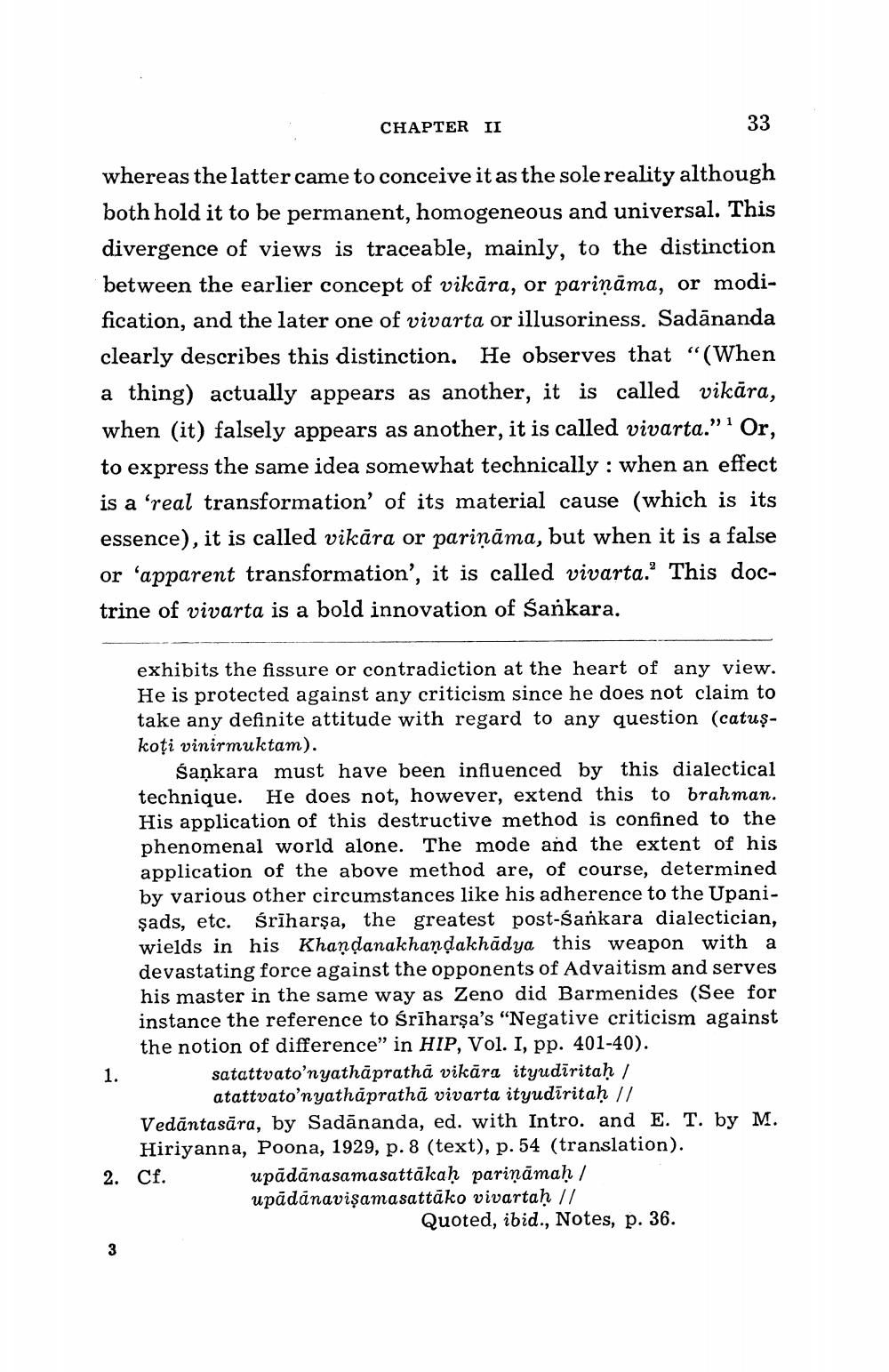________________
1.
whereas the latter came to conceive it as the sole reality although both hold it to be permanent, homogeneous and universal. This divergence of views is traceable, mainly, to the distinction between the earlier concept of vikara, or pariņāma, or modification, and the later one of vivarta or illusoriness. Sadananda clearly describes this distinction. He observes that "(When a thing) actually appears as another, it is called vikāra, when (it) falsely appears as another, it is called vivarta." Or, to express the same idea somewhat technically: when an effect is a 'real transformation' of its material cause (which is its essence), it is called vikara or parināma, but when it is a false or 'apparent transformation', it is called vivarta." This doctrine of vivarta is a bold innovation of Sankara.
1
CHAPTER II
3
3333
exhibits the fissure or contradiction at the heart of any view. He is protected against any criticism since he does not claim to take any definite attitude with regard to any question (catuskoți vinirmuktam).
2. Cf.
Sankara must have been influenced by this dialectical technique. He does not, however, extend this to brahman. His application of this destructive method is confined to the phenomenal world alone. The mode and the extent of his application of the above method are, of course, determined by various other circumstances like his adherence to the Upanişads, etc. Śrīharşa, the greatest post-śańkara dialectician, wields in his Khandanakhaṇḍakhadya this weapon with a devastating force against the opponents of Advaitism and serves his master in the same way as Zeno did Barmenides (See for instance the reference to śrīharṣa's "Negative criticism against the notion of difference" in HIP, Vol. I, pp. 401-40).
satattvato'nyathapratha vikara ityudīritaḥ / atattvato'nyathapratha vivarta ityudīritaḥ //
Vedantasära, by Sadananda, ed. with Intro. and E. T. by M. Hiriyanna, Poona, 1929, p. 8 (text), p. 54 (translation). upādānasamasattakaḥ pariņāmaḥ/ upādānaviṣamasattāko vivartaḥ //
Quoted, ibid., Notes, p. 36.




